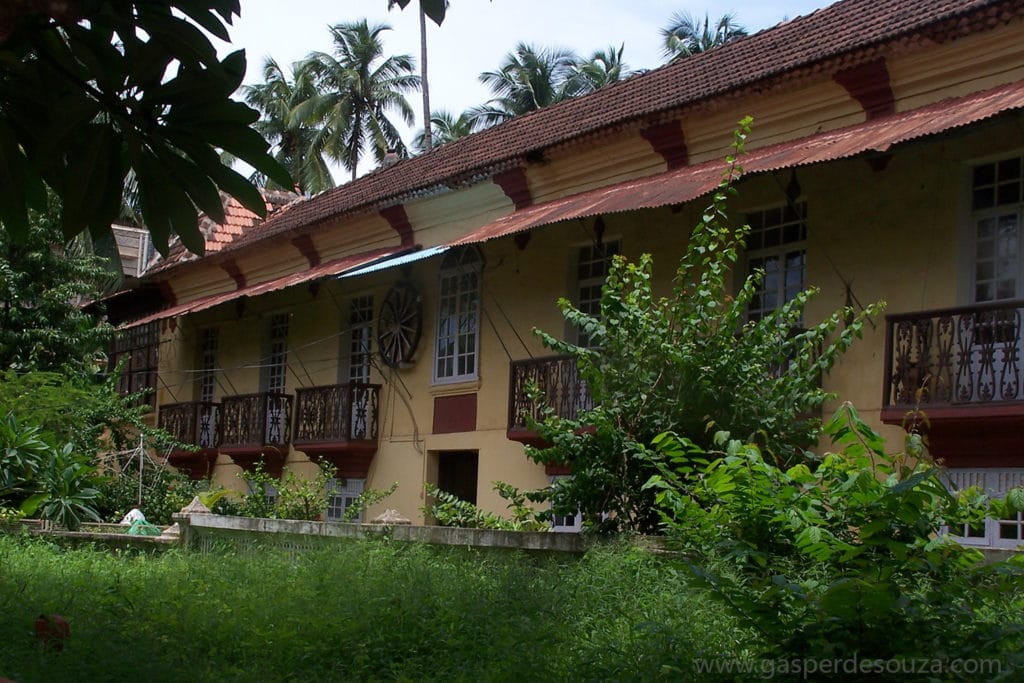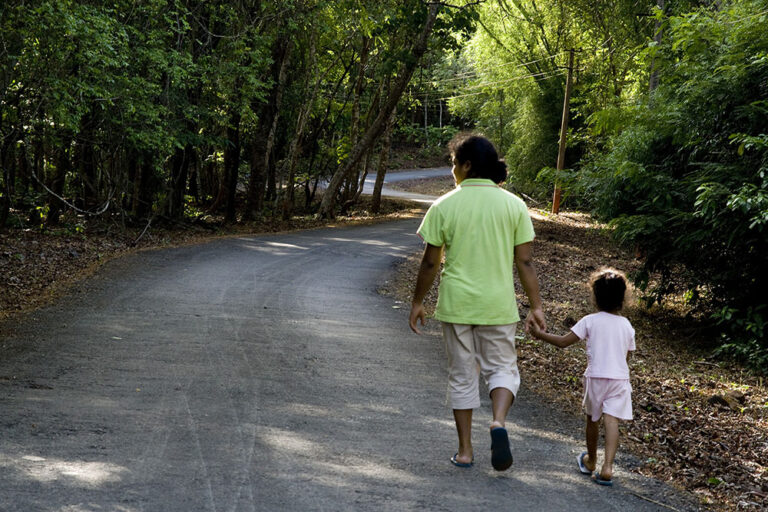Day fights a hopeless battle with the dark as I sit in the large living room, in the house of my ancestors. The rain outside has been a blur, a reflection of my mind. Eighteen months ago, we moved in from Bombay – the city of my birth. Now I am compelled to make tough decisions.
Plop. Plop. Plop. Drops of water dribble through a cracked tile above, into a bucket standing in the corner of the room. The walls are damp from incessant rains this year, my second monsoon in Goa. Ground water oozes through the floor at the rear of the house. Mopping is futile.
A foreboding of impending trouble, at the start of the monsoon, my computer went kaput. The technician blamed the humidity in the room. “It’s these roof tiles,” he told me, “happens this time of year.” Air conditioning could help. But the high, tiled roofs mean spending more on a false ceiling.
Repairs to the entire roof will cost half a million rupees. That’s besides wall plaster, false ceiling and re-tiling the floors – just to make the place habitable.
“This is not the life I want,” I think to myself, sinking deeper into the rocking chair. Practicality dictates it is time to move on. It’s not worth the effort or money.
Darkness has now won over daylight. A thunderstorm has moved in, and rain pours in earnest. The plops in the corner have become a regular trickle. The bucket is nearly full. Lightning periodically illuminates the semi-darkened room. In those flashes, from the hand-drawn portrait on the wall opposite me, my grandfather looks into my eyes. At the turn of the century, in 1903, he built this house. Since then, it has seen seven births, a wedding and two funerals.
*
Society’s history and culture are reflected in its art. Goa’s houses mirror its chequered history. Two periods mark the 500-year Portuguese rule in Goa. The first conquests marked widespread conversions to Christianity and subsequent inquisitions. Then in the 1700s, new territories were annexed to the north – the New Conquests. But the zeal for conversions had died down, and Portugal now was concerned with strategies to continue their rule in the Indies.
The houses reflect this history and are a fusion of 18th and 19th-century European styles with local ideas, motifs and materials. With imposing gateposts, large balcaos and translucent oyster-shell window panes, they dominate the landscape in Catholic Goa.
Built by Goa’s master craftsmen, these marvels were in perfect harmony with local conditions. The raised plinth, thick walls and high roofs keep the interiors cool even in the hottest Goan summer.
The balcaos – a feature added only in the early 20th century – acted as a buffer between the house and the public domain. Besides being a place for residents to sit and gaze at the world going by, the balcony was a space to entertain guests informally.
It is fascinating to discover the influences that went into the making of these homes. It is even more fascinating to uncover the lives of those who reside in these palacios of the past.
*
The coastal village of Calangute, like many other villages in Goa, boasts of many heritage houses.
In the late 1400s, Calangute was just a little fishing village. The Portuguese had not yet built the imposing Aguada fort at Sinquerim. In fact, the Portuguese reign in the Indies had not even begun. That was when that the Naiques of Calangute built a sprawling two-storied mansion in the village. Today, 500 years later, this yellow and rust house that pre-dates the Portuguese invasion, stands, gazing at the chaotic junction.
It’s just before noon when I arrive. I pass through a massive door, down an enclosed corridor and up a short flight of stairs, where I come to a landing overlooking an inner courtyard. This courtyard, surrounded by the building, is typical of Hindu architecture of the time.
An old man of stocky build and a cheerful face meets me on the first floor. He introduces himself as Dr Alex Proenca. I pass magnificent frescos that adorn the walls of landing as he leads me inside one of the rooms in the right wing. Other members of the Proenca family occupy sections of the massive mansion, today known as Proenca House.
We sit in a large dining room surrounded by period furniture, a testament to the history living within these walls. A long, carved, wooden dining table stands regally in the centre.
“You know, Shivaji stayed at this house,” Dr Proenca tells me, adding, “an entire garrison was stationed here with their horses and elephants.” It was when the Maratha army was trying to push back the advancing Portuguese. The Proenca House was the limit of their approach into Goa. I am curious about how this transpired. “We were originally the Naique family,” explains Dr Proenca. The Naiques were probably from the warrior clan and converted to Christianity after the arrival of the Portuguese. That’s when the family name changed to Proenca.
If history oozes out of the Proenca House, the 200-year-old Casa Voiz Alex along the Calangute-Candolim main road is a regular in films and books. Its current owner, Ms Gomes is a determined old lady who, single-handedly, spares no means to ensure her home continues to reflect the glory days of its past. The blue-blooded octogenarian shows immense pride in owning the magnificent structure. She speaks of the time when a foreign tourist, awed by its magnificence, recreated the structure in oil paint, presenting her with a copy.
Down the road from Casa Voiz Alex, Mr Ivo Filinto is also very enthusiastic when he talks about the house his grandfather built over 200 years ago. The senior Mr Filinto was a doctor, practising in the ‘4 pillars’ area in Panjim, during the Portuguese regime. Vehemently anti-Portuguese, the revolutionary doctor was forewarned of an impending arrest. To pre-empt it, he fled on horseback across the Goa border. The house has survived the ravages of 200 years and stands proudly, evidence of the grand old days.
*
It is a warm summer night in the early 90s. We are in the ancestral house in Goa for our annual summer holiday. My dad and uncle sip fresh urrak from their little glass goblets. Fermented from the juice of the cashew fruit, my dad calls the drink, nectar from the gods. A wooden cupboard set into the wall has, over the years, become the bar. Two single beds line up either side of the room. There’s no television in the house and certainly no internet. Entertainment comes from books in the library and some good old stories recounted in the evenings. These tales are usually about ghosts. But tonight is different.
“You know, this used to be our room – the boys’ room,” my dad tells me. “Your aunts were there,” he says, pointing to the room opposite.
“This house saw the wedding of Uncle Bruno,” he continues, sipping from his glass. “The hall was filled with guests. We had the dances in there. We were young and were fascinated with the party.”
I imagine the house filled with life and laughter in the days of my dad’s boyhood with his siblings. Then he continues reminiscing.
“Just before she died, my mother confined herself to her room. The painting of the last judgment hung on the wall over the bed. A quiet enveloped the house. When she died, her body was placed in a coffin in the centre of the hall, where neighbours and friends gathered to see her for a final time.”
“That was my first experience of death. I moved to Bombay after that, for work. The next time this house saw death was when my father died. He lived a full life, dying at 90.”
The room, lit by a single incandescent bulb, now grows silent. Crickets chirp outside the window, signaling the coming of the monsoon and our time to depart for Bombay.
But the conversations lived on, in my mind.
*
These ancestral marvels are in stages of neglect, even ruin. Termites and rodents seemingly have an affinity for these homes. While our ancestors took great pains in the construction of the main parts of their houses, the service sections – the domain of domestic help, were built at a lower plinth, with cement floors. Over time, moisture plays havoc.
They have stood proudly for centuries. But the rapid urbanisation of Goa, the large-scale migration of Goans, the shrinking of the average family size, and the need for convenience have shaken the foundations of the ancestral Goan home.
Maintenance is demanding. It is laborious, dusty, and a drain on the finances, often beyond the means of middle-class families. Bickering among the many inheritors drives the final nail in the crumbling walls of the ancestral Goan house.
Vultures surround a dying gazelle. Corporate builders smell an opportunity and lure owners with lucrative offers. An apartment and money in the bank are all it takes for the ultimate demise of the Goan palacios.
Ten years ago, on the road where I live, there was not one apartment building. Today, there are seven within the length of a football stadium. I have watched exquisite old structures come under the bulldozers of unimaginative builders, metamorphosing into monstrosities called apartment blocks. Along the main Calangute road, it is almost impossible to see a period house amidst the forest of apartment complexes. The once imposing Casa Voiz Alex is dwarfed by a 4-storied apartment building, barely ten meters from the balcao.
*
Practically, it would be impossible to construct structures like this today. But there is an undeniable charm living in these jewels. And so, saving them is our only option. In 2003, I chose to give my ancestral house a new lease of life. Suresh, an old master craftsman from Siolim, had worked on the restoration of 16th and 17th-century church roofs around Goa. I knew, under him, our house had a chance.
First, the tiles came down. Then the rafters. Finally, the beams. I watched Suresh as he carefully noted his measures. I marvelled at the old man’s sense of geometry as he calculated the angles, elevations, and gradients. A thin frame with a weathered look on his face, he stood under the scorching summer sun and sketched his diagrams on paper. He had never been to school, much less engineering college. And yet, over the years he had mastered the art of traditional architecture.
One evening, after the workers had left for the day, I climbed to the top of highest point of the house and looked around. I felt a sense of awe and respect for these craftsmen. And Suresh was one of the last from that period.
It took him two months to bring down the whole roof and restore it with new beams, rafters, and tiles. But when he completed, it was remarkable.
*
A couple of years ago, I turned to Suresh once more for additional work on the rear of the house. His son picked up the phone. “Hello, it’s been some time,” he said, “a few months ago, pai passed away.”
There are crests and troughs, cheers and tears. That’s the nature of history. That’s the nature of life. That’s the eternal struggle. With the passing of the master craftsmen, must the jewels finally be lost?
***
(A version of this story appeared in the February 15, 2003 edition of the Navhind Times, Goa. The article as appears above, was revised in 2017.)



